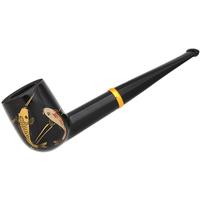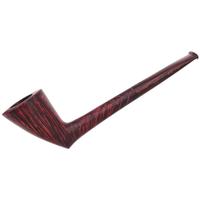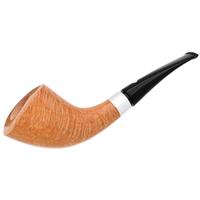Yes, quality tobacco all around, even if it doesn't agree with everyones tastes. I have personally enjoyed all the Cringle offerings and like yourself, would find it interesting if Sutliff would put a different spin on it this year. Sort of like Christmas Cheer used to be for me, the annual Holiday offering from Sutliff is fun and adds to my enjoyment of the season.
Cringle Flake 2022
- Thread starter Ora Pro Nobis
- Start date
You are using an out of date browser. It may not display this or other websites correctly.
You should upgrade or use an alternative browser.
You should upgrade or use an alternative browser.
There is no trolling here. I tried it again, and found it as putrid as before.
Look at my other reviews, and you’ll see I’m serious about my observations. However, If my words offended anyone I’m sorry.
Still, if words in a Tobacco review are enough to rile you up considering the contemporary domestic and global circumstances, then perhaps you’re taking this hobby, and yourself, way too seriously.
Just a thought.
Look at my other reviews, and you’ll see I’m serious about my observations. However, If my words offended anyone I’m sorry.
Still, if words in a Tobacco review are enough to rile you up considering the contemporary domestic and global circumstances, then perhaps you’re taking this hobby, and yourself, way too seriously.
Just a thought.
Cohiba, Cuba's premiere cigar line is known for "barnyard" notes .. that's hay, earth. leather and manure and it's not unusual to hear people comment on the "cow shit", just how it is.That is indeed how it reads. Descriptive word choices such as crap, poop, feces, etc. Doesn't seem like a seasoned pipe smoker.
Yeah, I was a bit taken aback by the response of those few posters. With one post of mine, they were able to condemn my intellectual capabilities, maturity level, social mores, and an implication of a low educational level. I’ve read lots of posts that included “shit”, “turd” etc. I will avoid this language in the future to keep things civil on this forum, but there was most certainly an aroma of condescending elitism to the reactions.Cohiba, Cuba's premiere cigar line is known for "barnyard" notes .. that's hay, earth. leather and manure and it's not unusual to hear people comment on the "cow shit", just how it is.
Oh well, live and let live. As for me, this is the last I will speak on this matter.
Don't change for other people, especially not online.Yeah, I was a bit taken aback by the response of those few posters. With one post of mine, they were able to condemn my intellectual capabilities, maturity level, social mores, and an implication of a low educational level. I’ve read lots of posts that included “shit”, “turd” etc. I will avoid this language in the future to keep things civil on this forum, but there was most certainly an aroma of condescending elitism to the reactions.
Oh well, live and let live. As for me, this is the last I will speak on this matter.
That's why i prefer Partagas.Cohiba, Cuba's premiere cigar line is known for "barnyard" notes .. that's hay, earth. leather and manure and it's not unusual to hear people comment on the "cow shit", just how it is.
Smoke what you like, like what you smoke!That's why i prefer Partagas.
No need to apologize. Offense is taken not given. Apparently there are people out there that have such an advanced ability to discern nuances in blends that they can not only pick them out in their own pipe but have the ability to discern how you are experiencing it tooThere is no trolling here. I tried it again, and found it as putrid as before.
Look at my other reviews, and you’ll see I’m serious about my observations. However, If my words offended anyone I’m sorry.
Still, if words in a Tobacco review are enough to rile you up considering the contemporary domestic and global circumstances, then perhaps you’re taking this hobby, and yourself, way too seriously.
Just a thought.
It's funny how a bad review (not saying this review is bad) but a review that is leaning more towards harsh criticism, will garner more attention then a review thread that has a more sophisticated type of writing and thinking and actual reviewing of a blend. Controversy shall remain Supreme even in forums in which Men and women consider themselves gentlemen or ladys.
I was going to grab a few tins of this, but then read a couple reviews on tobaccoreviews about a heavy vinegar note.
I like a vinegar like quality, but I’m not a fan of vinegar “casing” or topping, or preserving or whatever. The example that comes to my mind is Mississippi River: to me, this tasted and smelled like it was doused in the white vinegar under my kitchen sink. I’ve jarred it, and am hoping time will alleviate it, but we’ll see. I like stinky tobaccos, but vinegar has to be very subtle for me.
So, if there is a vinegar note, is there a comparison to this vinegar note in Cringle flake?
I like a vinegar like quality, but I’m not a fan of vinegar “casing” or topping, or preserving or whatever. The example that comes to my mind is Mississippi River: to me, this tasted and smelled like it was doused in the white vinegar under my kitchen sink. I’ve jarred it, and am hoping time will alleviate it, but we’ll see. I like stinky tobaccos, but vinegar has to be very subtle for me.
So, if there is a vinegar note, is there a comparison to this vinegar note in Cringle flake?
I popped a tin of the '21 last night to refill my jar. The vinegar note is is there for sure, but not overpowering in my opinion, with the smell being more pungent than the taste. I'm no expert, but I believe this comes from the fermentation of the melding tobaccos, not from a topping. Grab a tin and try it if you can find it. Use scissors to cut it against the grain into tiny cubes. I find this trick removes drying requirements allowing for more of the flavour while alleviating a lot of the bite and burning issues that I got with other stuffing techniques.I was going to grab a few tins of this, but then read a couple reviews on tobaccoreviews about a heavy vinegar note.
I like a vinegar like quality, but I’m not a fan of vinegar “casing” or topping, or preserving or whatever. The example that comes to my mind is Mississippi River: to me, this tasted and smelled like it was doused in the white vinegar under my kitchen sink. I’ve jarred it, and am hoping time will alleviate it, but we’ll see. I like stinky tobaccos, but vinegar has to be very subtle for me.
So, if there is a vinegar note, is there a comparison to this vinegar note in Cringle flake?
Never tried anything cube cut. I’ll have to give it a shot. Thanks!I popped a tin of the '21 last night to refill my jar. The vinegar note is is there for sure, but not overpowering in my opinion, with the smell being more pungent than the taste. I'm no expert, but I believe this comes from the fermentation of the melding tobaccos, not from a topping. Grab a tin and try it if you can find it. Use scissors to cut it against the grain into tiny cubes. I find this trick removes drying requirements allowing for more of the flavour while alleviating a lot of the bite and burning issues that I got with other stuffing techniques.
The vinegar, so I've been informed, is a byproduct of fermentation that can develop from the use of acids in the processing, not a topping. If you are turned off by it, the simple fix is to open the tin a week before you start smoking, and air out the contents by removing the lid for a couple of minutes, once a day. That's what I do with a tin of McClelland when I decide to smoke one.I was going to grab a few tins of this, but then read a couple reviews on tobaccoreviews about a heavy vinegar note.
I like a vinegar like quality, but I’m not a fan of vinegar “casing” or topping, or preserving or whatever. The example that comes to my mind is Mississippi River: to me, this tasted and smelled like it was doused in the white vinegar under my kitchen sink. I’ve jarred it, and am hoping time will alleviate it, but we’ll see. I like stinky tobaccos, but vinegar has to be very subtle for me.
So, if there is a vinegar note, is there a comparison to this vinegar note in Cringle flake?
Fermentation is the process of microbes eating sugar, resulting in an acid byproduct, not the other way around. I ferment a lot of food like saurkraut, pickles, kimchi etc., and it would be the same thing with tobacco, albeit a different microbe likely. This is why good natural fermented veggies (lacto-fementation) has a vinegary flavour without adding any vinegar to it.The vinegar, so I've been informed, is a byproduct of fermentation that can develop from the use of acids in the processing, not a topping. If you are turned off by it, the simple fix is to open the tin a week before you start smoking, and air out the contents by removing the lid for a couple of minutes, once a day. That's what I do with a tin of McClelland when I decide to smoke one.
That's good to know. I read a post, which I will try and find, stating that Mississippi River had additional vinegar added as a preservative or something to that effect.The vinegar, so I've been informed, is a byproduct of fermentation that can develop from the use of acids in the processing, not a topping. If you are turned off by it, the simple fix is to open the tin a week before you start smoking, and air out the contents by removing the lid for a couple of minutes, once a day. That's what I do with a tin of McClelland when I decide to smoke one.
Honestly, if that "tang" and "vinegar" is just a natural process I'm more comfortable with it. Mississippi River heavily ghosted a pipe of mine with vinegar, so I've been a little weary. To me, I don't get much vinegar from any other red virginia I've tried.
It's been sitting in a jar for a year or so, so maybe I should give it another go in a cob.
Actually, there is no real fermentation in tobacco, like we know of in other genres. This is enzymatic. Microbes that develop during the curing stages die away, and the enzymes left behind work on it.Fermentation is the process of microbes eating sugar, resulting in an acid byproduct, not the other way around.
In krauts and when people make real pickles, not the grandma ones where the pour vinegar over them, it is a bacterial infection that occurs that produces acetic acids. I get this when I have used jars in making cavendishes out of my homegrown tobaccos. This wasn't on purpose, just reusing jars to cook the tobaccos, and then aged some in the jars and discovered that the twists that I stored in the jars created an acetic acid.
Most likely, it has to occur on its on, sort of like the natural process that cabbage goes through in becoming kim chi or kraut. Once the storage thing has produced this desired reaction, just don't wash it. I don't think acids have to be introduced artificially.
The old videos that I remember watching from McClellands a long time ago showed concrete surface with someone turning the tobacco with a shovel. My guess is that the slab had developed the bacteria, and they just kept feeding it tobacco... similar to using a starter to keep making sour dough breads. Rough analogy, not exact, but hopefully you get the image of how it might work. This is just logical guessing based on my experiences in playing and processing my own homegrown tobacco experiments, watching videos, and listening to podcasts of Mary and Mike... and filling in the gaps with what makes sense.
Who knows, maybe I'm wrong, but just adding vinegar to tobacco never gave me anything that tasted very good. And, I tried many different varieties of vinegar.
Per Jensen of Mac Barens also told us that they used vinegar directly on ODF as a mold inhibitor. this is why their tins were rusting in earlier releases. I think that some companies have used vinegar, and some have been able to have the tobacco form an acetic acid. The difference is between grandma's pickles where she pours hot vinegar salt and sugar over cucumbers to make pickles, and those that make the original pickles by letting them ferment with a bacterial infection. Grandma's pickles are ok, stringent, but ok. Real pickles made the original way are much better... better being, of course a subjective term. YMMVThat's good to know. I read a post, which I will try and find, stating that Mississippi River had additional vinegar added as a preservative or something to that effect.
Yeah. I don't sense any vinegar on current ODF tins (not to say it's not there). If they use it now, it's well done. Perhaps Mississippi River is one of those "Grandma pickle" blends, haha..Per Jensen of Mac Barens also told us that they used vinegar directly on ODF as a mold inhibitor. this is why their tins were rusting in earlier releases. I think that some companies have used vinegar, and some have been able to have the tobacco form an acetic acid. The difference is between grandma's pickles where she pours hot vinegar salt and sugar over cucumbers to make pickles, and those that make the original pickles by letting them ferment with a bacterial infection. Grandma's pickles are ok, stringent, but ok. Real pickles made the original way are much better... better being, of course a subjective term. YMMV
I don't know why I feel so compelled to overshare when vinegar in tobacco comes up. I think I am still recovering from some Sutliff 515-RC-1 PTSD, when I opened a 1lb bag and was hit with the pungent cat piss smell a few years ago.Yeah. I don't sense any vinegar on current ODF tins (not to say it's not there). If they use it now, it's well done. Perhaps Mississippi River is one of those "Grandma pickle" blends, haha..
I also went through a phase where I was strategically thinking about and experimenting with my homegrown Virginias to get that McClelland bbq flavor in my own blends. So, I've done a lot of thinking about this.

I’m thankful!I don't know why I feel so compelled to overshare when vinegar in tobacco comes up. I think I am still recovering from some Sutliff 515-RC-1 PTSD, when I opened a 1lb bag and was hit with the pungent cat piss smell a few years ago.
I also went through a phase where I was strategically thinking about and experimenting with my homegrown Virginias to get that McClelland bbq flavor in my own blends. So, I've done a lot of thinking about this.












